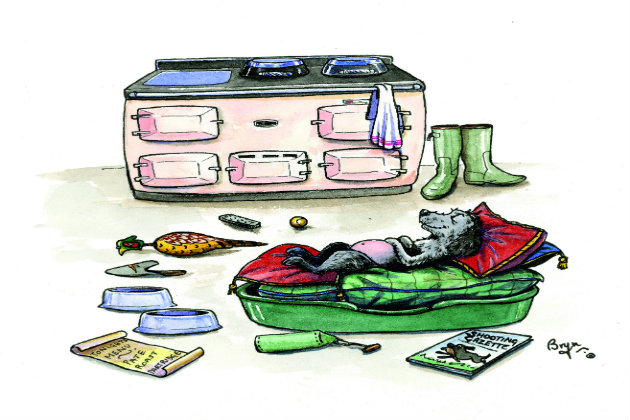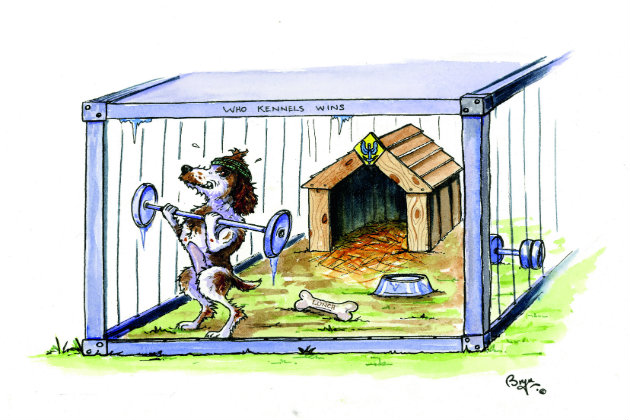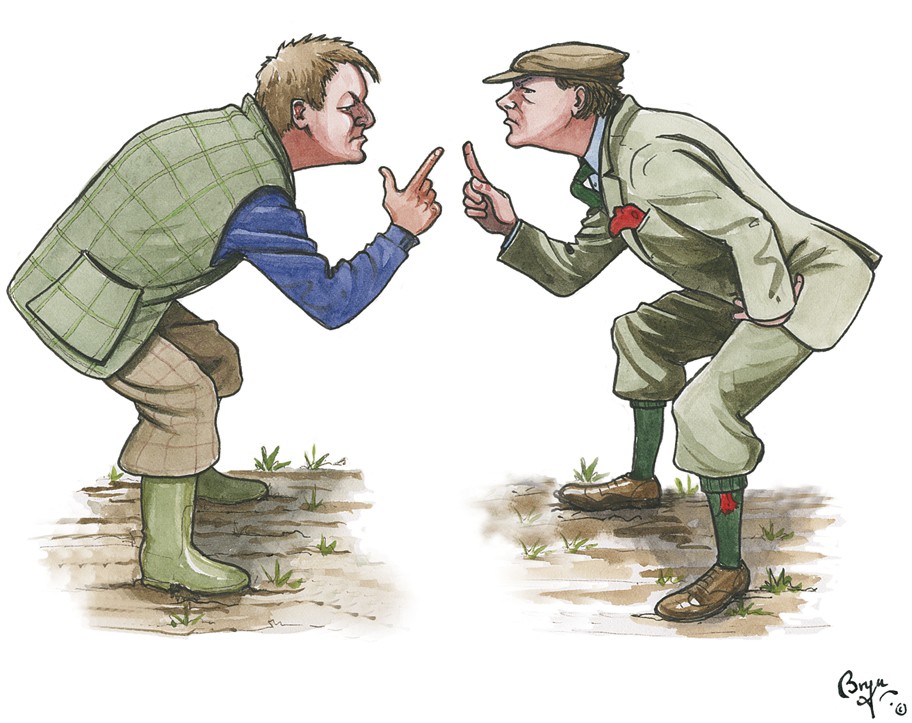Kennel or kitchen: Where should your gun dog be when not in the field?
Win CENS ProFlex DX5 earplugs worth £1,149 – enter here
Should gundogs live in the kitchen or a kennel?

Across the dog-owning fraternity there is one debate that always brings out a strong difference of opinion. Where should the dog(s) live? In the house or in a kennel? And there is usually no fence to sit on. Camps seem pretty divided on the issue and opinions run high as a kite. Google it and you get 11,700,000 results in 0.68 seconds that tell you precisely nothing. All the online forums give a huge swathe of opinions but any tangible or factual evidence as to which situation most benefits the dog or the role it performs in the field is woefully absent. So where does all this angst come from?
Those who you can’t argue with on the kennel side are those folk who have to kennel the dog through lack of space, allergies or unruly behaviour (the dog’s of course), or professionals who need to keep dogs outside for practical reasons. It makes complete sense.
Are kennels better?
Putting these practicalities aside, popular kennel arguments are: that a gundog is all the better for not getting a warm fire which makes it soft; annoying family distractions and attention are counter-productive to successful training; and a more monastic existence helps the dog bond with its owner. And there is usually some family wisdom in there somewhere about father keeping dogs outside. The mantra is it keeps the dog lean and mean and focused, a bit like a Spartan warrior. Another angle is the Tidy House Syndrome which sits neatly alongside, i.e. no dog hairs all over the house, all the time. And there is plenty of truth in this side of the argument. A dog needs to know what it is expected to do, so it can then focus and be keen about what it does naturally. It needs to relish the time it gets out exercising and training, and fewer distractions help. The patterns that it learns in a certain environment make a great gundog and the relative isolation of being outside helps these patterns to become clearly established.
Dogs have great learning abilities and generally take the easiest option. A house, with its distractions of sofas, titbits, mixed messages and so on, is not the perfect place to bolster your regime in the field. And let’s be honest: you cannot turn the average family into dog handlers who understand what you are trying to achieve. They will not be consistent and insistent, which is the bedrock of a successful working dog.
And this is not a draconian view. A dog should have love, socialisation, and a family environment, but it can still get these things while living in a kennel. Kennel dogs have their space and they know it. So what’s wrong with creating a great kennel space for it, loving it and giving it boundaries while also keeping it trained and focused? A kennel is not a horrible place other than in the minds of some humans. With a life in the kennel the dog will be well prepared for being outside and arguably have a better coat to withstand the rigours of shooting.
In addition, a dog doesn’t know what a house is and will adapt to whatever environment is warm, secure and friendly, which most kennels are. A dog needs its space and to own its own area – something it cannot get in the average house.
We also have history, perceived wisdom and tradition thrown into the mix. Until just over 100 years ago, working dogs were kept outside before the word ‘pet’ was invented. There was no debate then. Countless shooting and gundog books talk about kennels as part of the norm. Like most of the shooting traditions, the idea of the dog and the kennel has been passed down through the generations.
Or is the house better?
The other side of the coin is less practical and more emotional but equally valid. Get it in the house, give it some rules of course, but enjoy the company and unconditional love. Your family will enjoy all the benefit a canine companion brings, and you will experience that gentle exhalation of breath that a contented dog gives as it finds its favourite spot in the evening. Sitting by the television with the dog outside is not normal. And all going to bed and hoofing it out is cruel, with the poor thing staring longingly at its owner’s bedroom window from its garret in the garden.
Having read In Defence of Dogs by John Bradshaw, a great tome about dogs having the need for companionship and interaction, I get it. Dogs have social intelligence and the average Labrador in the modern world is adjusting to being part domestic and part working.
Let’s embrace the fact that, for part of the year at least, we have a pet and companion, as well as a working dog for the duration of the shooting season. After all there is no evidence that behaviour in the field and deterioration of training is down to a domestic environment per se.
Dogs are not humans
However there is obviously a danger of becoming anthropomorphic here: dogs are not humans and to transpose any human emotion or thought process on to them is never helpful. Any dog that is brought up properly, outside or inside, will be perfectly normal and content with either roof, as it knows no other.
To choose tradition and practicality or embrace the domestic animal wholeheartedly? Undeniably, the shooting field is full of labradors and spaniels that happily live in the house or the kennel, and spotting the difference is just not possible. We absolutely know it is not about the dog, but our choices.
So what do we do? My advice is to ask yourself the ‘why’ question and be realistic. Why put it in a kennel, and is there some overriding and obvious benefit over the house and vice versa? Think about what you and your family want and then choose either kennel or kitchen, whichever fits in with your lifestyle and your aspirations around wanting a dog in the first place. Then assess what sort of dog you have in terms of temperament. One dog may be quite happy being out in the garden while others are certainly not. Most important is to stick with whichever you choose and make the decision early in the ownership of that dog and keep to it.
The only problem is that modern life is never that black and white. For example, how many people are in their own home every night of the year? Travel for business or pleasure is more common than ever, and this has to be part of your decision-making process. Also, there is the question of how long the dog will be left on its own during the daytime. Some people mix a home environment with a kennel or a run quite well. Ultimately, if you want a successful working dog you will have to be clear about where it lives, whether inside or out, and establish a routine that works for all the inhabitants of your household.
Related Articles
Get the latest news delivered direct to your door
Subscribe to Shooting Times & Country
Discover the ultimate companion for field sports enthusiasts with Shooting Times & Country Magazine, the UK’s leading weekly publication that has been at the forefront of shooting culture since 1882. Subscribers gain access to expert tips, comprehensive gear reviews, seasonal advice and a vibrant community of like-minded shooters.
Save on shop price when you subscribe with weekly issues featuring in-depth articles on gundog training, exclusive member offers and access to the digital back issue library. A Shooting Times & Country subscription is more than a magazine, don’t just read about the countryside; immerse yourself in its most authoritative and engaging publication.









